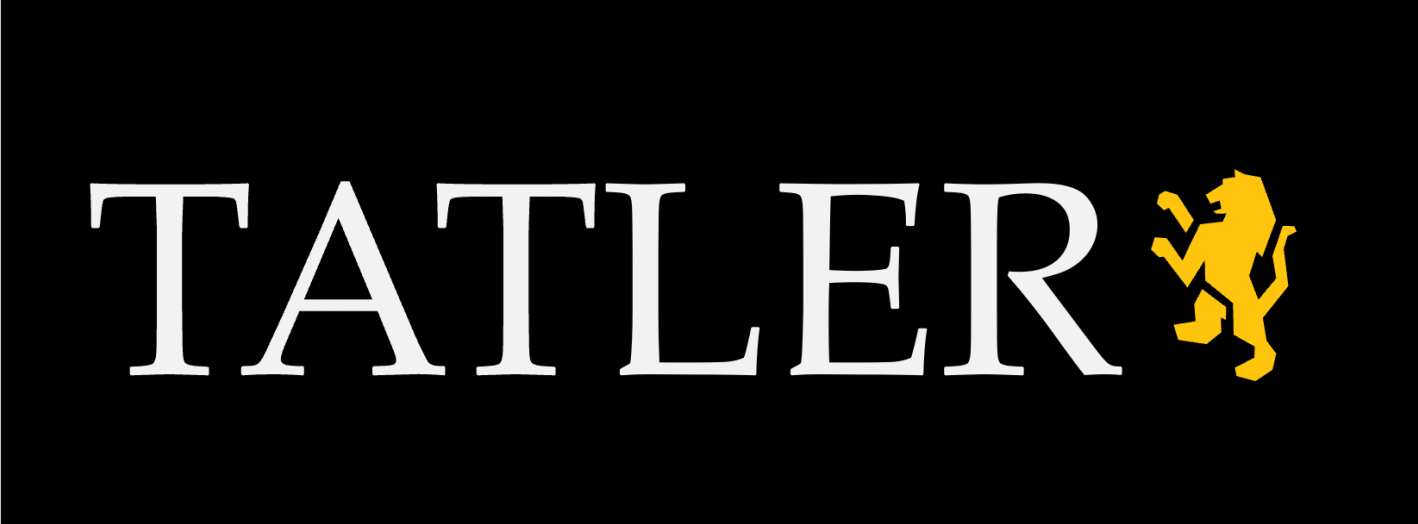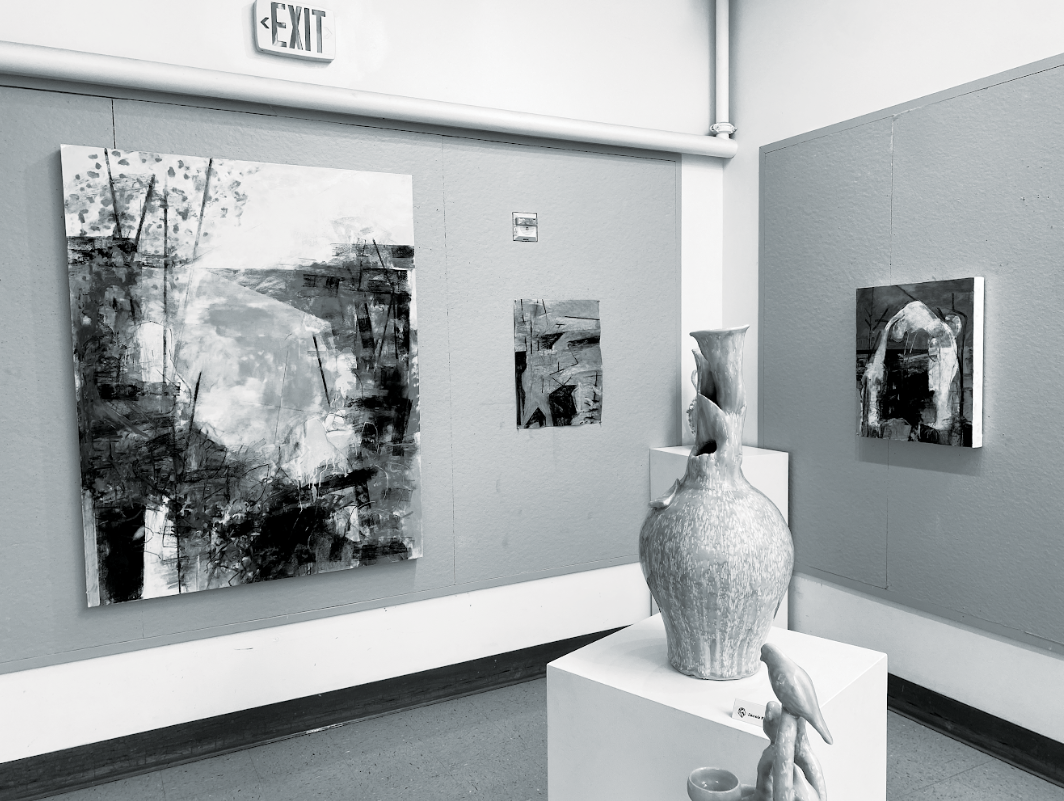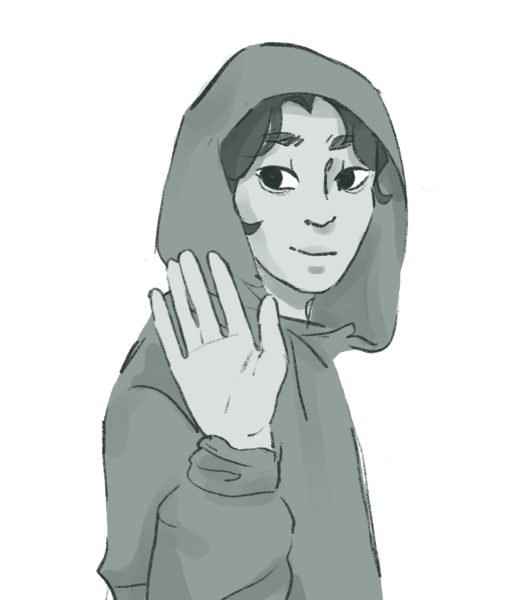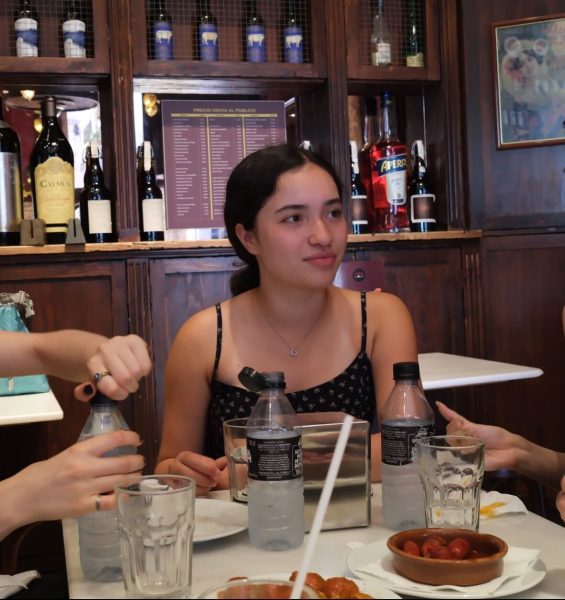Can you give me an overview of your current work on display?
Mr. Grava: This is exploration on smaller soda-fired vessel forms — basically, cup forms and limited forms. The purpose is to encourage a more interesting daily use for the work I make. The surfaces are derived from the soda firing process, so there’s some chemistry and relationship to the environment that makes up the surface. The soda firing process is based on historical wood fire ceramics, which was the traditional means to finish work during nearly all of human history up until oil and gas was invented. You burn combustibles like wood, the piece rolls through the kiln, and the process influences the surface — sort of glazing it in the process of the firing. There’s also the salt firing concept, which is an old German version of firing, and how sewer pipes and mugs were made. You take sodium carbonate and sodium bicarbonate and introduce it into the kiln during the firing process. It reacts with the silica and the clay to create a glaze. Soda firing is like a unification of the two firing processes.
Mr. Foran: Right now, I have a series of vessels in the gallery that are destroyed and reassembled. Some are more abstract forms, though I still think of them as vessels, and they have birds on them, or little candles. So it’s really a combination of those elements.
Mr. Willis: Right now I have a series of work that explores the dichotomy of the natural world versus the impact of humans in that world. There’s a lot of photographs of nature and open space, and then there’s also photographs of places that people have taken over. I like to use a lot of wide angles in my photographs, a lot of horizon lines and lots of textures. I’m trying to showcase how we interact with the world around us and how in some ways that can be amazing and beautiful and natural, and other ways it can be destructive.
Mr. Cook: The work in the gallery now… represents some new directions in the work that I’m exploring. There’s two threads. One is an experimental use of materials, where I am staining raw canvas with acrylic paint and watering the canvas down and letting colors bleed, and then layering with chalk pastels and acrylic paint. The goal is to not have any particular outcome in mind. It’s just about seeing where the process takes me and discovering things about the materials along the way.
The other thread is more kind of connected to previous work. It’s rooted in an abstract interpretation of landscapes and these figurative elements in the paintings. I start with a framework for a realistic figure or group of figures. And then they kind of get broken down and abstracted and broken apart, put back together. Sometimes I always worry when I’m making pure abstract work, because I don’t want it to be seen as just decorative. Of course I want to make beautiful work. But I also hope it makes people think about how they engage with their landscapes and their bodies. Painting reminds me to engage with the world in a deeper, slower way. I really value the fact that making a painting takes time. It’s not something you just crank out over a weekend. It’s an investment. You build a relationship with the piece — something that’s really deep and profound.
What inspires or motivates you to create your art?
Mr. Cook: Being around art defines a large part of how I see the world. I think there are some stylistic and process oriented relationships with artists that I admire that I like to think about as motivation. I want to add my voice into the mix, but not to mimic them too closely.
Mr. Willis: For this series, it was really a study of my love for nature. A lot of these were taken in Colorado. I grew up there, in a place called High Mountain Prairie, which has lots of open land, but was perfect for developing huge subdivisions. So again, there’s that balance between nature and human development. I also love looking at contemporary art. The work that my colleagues are making, and the work that my students are making, inspires me a lot. I look at social media to see what contemporary artists are doing and kind of how they’re existing in the world. I love photography, I love drawing and painting, ceramics, and music. All that shapes my own vision and how I live in the world.
Mr. Grava: My inspiration comes from two general sources. One of them is the science of geology and chemistry. I take local raw materials and incorporate them into my glazes for the building process. For example, I have located clay in West Seattle, dug out the ground, and turned it into glaze. And I also have buckets of sand at home from different places I’ve been. I’ll wedge it into my clay and then that becomes this kind of hidden, secret texture. And then I have this granite from the Lake Chelan area where we go camping all the time. I harvest it, crush it up, and turn it into glaze. And that, I believe, is one of those original relationships between what you use to create and express yourself. There’s a deeper meaning there for me than just buying material at the store. It imparts deeper meaning into the work that people notice but don’t really know. I feel like that holds power. There’s an energy that it unconsciously communicated to others.
Mr. Foran: The work is super new for me. I mean, I’ve worked on it for a long time, but it’s the first time that I’ve fully realized the work and glazed it. One thing I know is that it’s taken a lot of deviations from where I originally saw it going. The vessels themselves are what I’m most excited about in terms of an ongoing pursuit. Essentially, I took inspiration from different historical pottery, drawings of vessels that had graphics, different culture, tradition and just what the vessel is and what it can speak to from a philosophical standpoint.
I coil built the original vases — there were about 6 of them — and they were really well refined, smooth and tight and they looked really nice. I made molds of them in a process called casting. As I pulled them out of the mold, they were broken, and that was the moment of inspiration. A lot of times, my own work is super intuitive, and it’s not necessarily linear. I was interested in taking parts and fragmenting different vessels, but then making it into something more beautiful. I was thinking about our contemporary world, and how everything is so fragmented. But we also have stories that when put together are almost more beautiful than the original archetype.
Finally, there’s a void in some [of the pieces]; you’ll see an open space that I left and wanted to feel really dark. That inner space is really what I’m always exploring in my work — what I would refer to as the concept of the void. It’s a notion that is actually deeply spiritual.
Do you think that your style has evolved over time? If so, how?
Mr. Willis: When I first started taking photographs, it was very traditional. It was very based on the rules of composition. You have to follow the rule of thirds. You have to place your subject in a certain spot in the photograph. You have to use certain color combinations or incorporate leading lines. As I’ve grown as a photographer, I’ve realized that it’s a lot more fun to break those rules and push the boundaries. More recently I’ve involved digital stuff with my art — such as playing around with AI-generated images; how I can manipulate those and turn them into something of my own, and juxtaposing that with old school film photography. I love experimenting with graphic design as well, so I’ve branched out from starting at strictly analog to moving into this marriage of photography, Photoshop, and all other sorts of tools to create something that’s more mixed media.
Mr. Foran: It’s become much more loose and — well, it’s become more skilled — but it’s also become much more spontaneous, unrestrained, physical, textural, with higher contrast. And I’m shifting more into an abstract approach to art making. I think I will expand upon the series that’s in the show, especially the vessels. I’m letting go of the birds right now, but I think I will finally incorporate water, fountains, fish, and worlds within worlds. For example, taking a broken vessel — a destroyed vessel — using parts of it and creating a living environment inside of the art.
Mr. Cook: Lately I’ve been incorporating chalk pastel into oil painting. That’s something sort of new for me this past year, and it allows me to draw in a really direct, spontaneous way. There’s this initial burst of energy when you start a painting that’s very loose, gestural, and spontaneous. Sometimes the painting can lose that energy as you work on it, and I feel like the chalk pastel is actually bringing that energy into the process for, like, a longer period.
One of the links between all of the paintings — and it’s something that I’ve been thinking about a lot this last year — is that so much of what I love about painting, especially abstract painting, is not really knowing where the paintings are going to go. I might have ideas for where I want them to go, but if I’m not inviting some aspect of discovery, then the process feels sort of predetermined. I was making some realistic landscapes the last few years, and I like them, but I’ve put that work on hold to go back to some of the foundational roots of things. I feel way more excited about letting the work evolve. I have these ideas where the painting can go, and the painting suggests to me three or four directions it can go, and I try to respond.
How has your work as a teacher and the environment at Lakeside shaped your art?
Mr. Cook: I see an openness to a lot of different ideas and to growth that stems from being around people learning new things all the time. You gain an appreciation for how hard it is to learn new things, but those breakthrough moments that I see from students also give me more courage to try things too. A lot of teachers talk about teaching as something that keeps you young because you’re around people learning things all the time. You stop being youthful when you have this fixed idea of what the world is or what you are as a person. The idea of continuously evolving as a person, of changing and responding to things around you, is really powerful.
Mr. Grava: The way I focus on getting students to see how much they can and should connect with themselves in the making is exactly what I’m doing with myself now. I am teaching people not just the craft, but the artistry behind the thinking—how to identify and connect themselves to the material. It encourages me to do the same thing, because I had kind of fallen out of that rhythm.
Mr. Foran: On the most basic level, a lot of the diversity in my work stems from demonstration pieces that I use to teach students. If I were in my studio, I would probably have a different process that’s more linear, and it would be a tighter body of work.
From the perspective of the department head or leadership position, I think [the show] is an exercise that’s unique to our department — that we are consistently challenging ourselves to produce a show, to share with students and share our process. And it keeps us awake, so we’ll teach better, because we’re physically going through some of the same challenges students are. It keeps us deeply connected to the creative process in a way that I think is invaluable.



